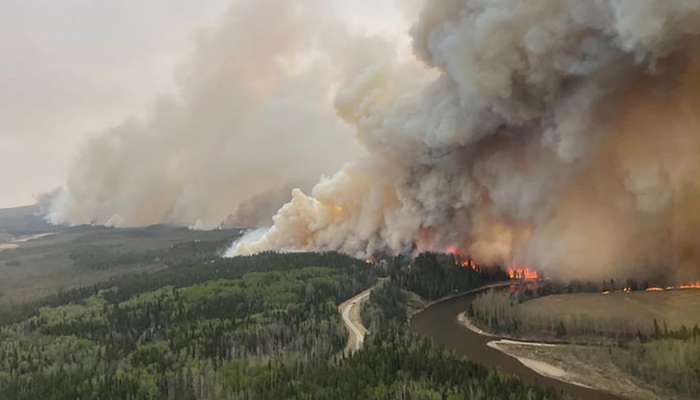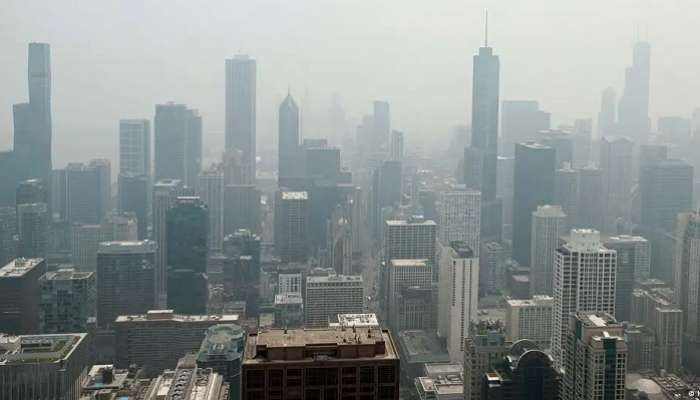

USA: US officials issued warnings across several states in the Midwest after heavy smoke from Canada's wildfires blanketed the area on Wednesday.
The latest round of unhealthy air conditions in the United States comes as the country's northern neighbor battles hundreds of wildfires, with many currently burning out of control.
Which areas are impacted?
The Great Lakes region of the US was hit the hardest on Wednesday — with thick smoke causing dangerous conditions in the states of Michigan, Ohio, Illinois, Wisconsin, Minnesota and Indiana.
For several highly populated areas, the air quality conditions are currently rated at "very unhealthy," according to data from the US Air Quality Index.
"This is particularly thick smoke," National Weather Service meteorologist Bryan Jackson told the Associated Press.
Images from the city of Chicago, located in Illinois, showed hazy conditions that obscured the city's skyline.
Chicago Mayor Brandon Johnson strongly urged older adults, people with health issues and young people to stay inside until the smoke lifted. He also promised "swift action to ensure that vulnerable individuals have the resources they need to protect themselves and their families."
On Wednesday morning, the city of Detroit in Michigan logged some of the worst air quality in the country. State officials called on people with lung conditions or asthma to avoid going outside, and advised canceling any strenuous activities taking place outdoors.
The smoke is forecast to drift over to western New York and Pennsylvania later on Wednesday. The Mid-Atlantic region, which includes New York, New Jersey, Maryland and Virginia, was expected to be impacted on Thursday.
A thick and dangerous cloud of smoke currently stretches from the Midwestern state of Minnesota over to Philadelphia, Pennsylvania (image:DW)
What is the status of Canada's wildfires?
Currently, there are 490 wildfires burning in Canada — with 255 of the blazes believed to be burning out of control.
Most of the fires are located in the provinces of Quebec and Ontario, which are located closer to highly populated areas of the neighboring US. Previous wildfire seasons saw more blazes in Canada's western wilderness areas.
Although areas in the province of Quebec saw some rain, it won't be sustained enough to extinguish the fires.
As of Monday, wildfires have burned through 76,129 square kilometers (29,393 square miles) of land in Canada since the start of the year.
The scale of destruction exceeds the previous record that was set in 1989, according to Canada's National Forestry Database.
Summer of fire and smoke
Earlier this month, New York City and Washington DC experienced days of poor air quality due to the Canadian wildfires.
Images showed New York's infamous skyline shrouded in an orange haze.
The small particles from wildfire smoke cause especially hazardous conditions. The particles can affect the heart and lungs, making it more difficult to breathe. The smoke also irritates the eyes, nose and throat.
Scientists say human-induced climate change is increasing the risk and rate of wildfires, as well as heat waves and other extreme weather systems.